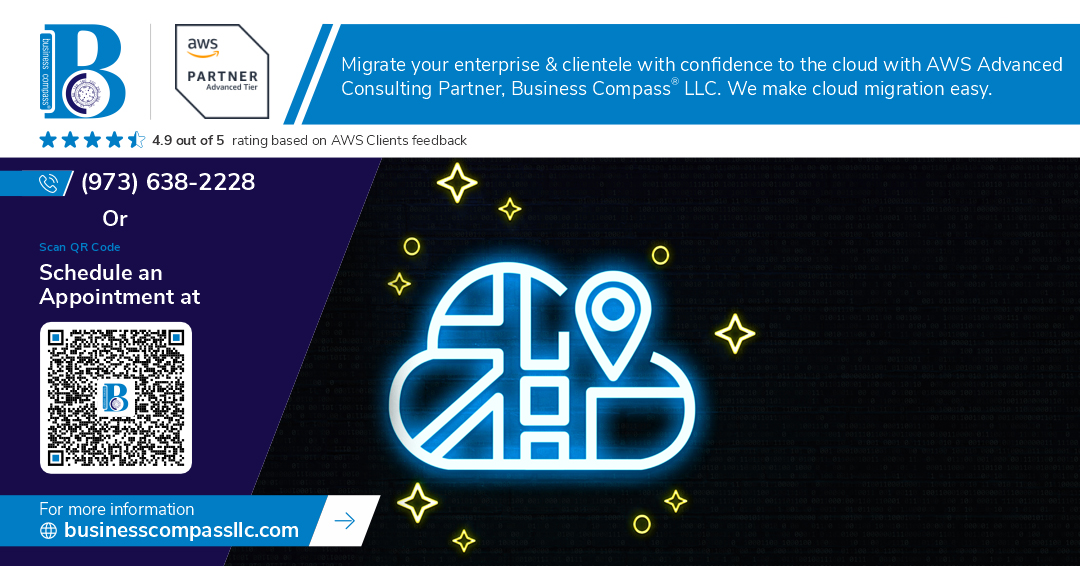Is your AWS storage solution struggling to keep up with demand? Are slow data access times and inefficient management causing headaches for your team? You’re not alone. Many businesses face challenges when it comes to optimizing their cloud storage performance.
But fear not! 🚀 The world of AWS storage services offers a treasure trove of opportunities for performance tuning and optimization. From the versatile S3 to the lightning-fast EBS, and from the scalable EFS to the specialized FSx and Glacier, there’s a solution for every storage need. The key lies in understanding how to leverage these services to their full potential.
In this comprehensive guide, we’ll dive deep into the art and science of performance tuning for AWS storage and data management. We’ll explore practical techniques to supercharge your S3 buckets, squeeze every ounce of performance from your EBS volumes, and maximize throughput in EFS. You’ll also learn how to fine-tune FSx for both Windows and Lustre workloads, and even optimize Glacier for those long-term storage needs. So, buckle up as we embark on this journey to transform your AWS storage from a bottleneck to a powerhouse! 💪💾
Understanding AWS Storage Services
A. Amazon S3: Object storage overview
Amazon S3 (Simple Storage Service) is AWS’s scalable object storage solution, designed for durability, availability, and performance. It’s ideal for storing and retrieving any amount of data from anywhere on the web.
Key features of Amazon S3:
- Durability: 99.999999999% (11 9’s)
- Availability: 99.99%
- Scalability: Virtually unlimited storage capacity
- Security: Comprehensive security and compliance capabilities
S3 storage classes:
| Storage Class | Use Case | Availability | Retrieval Time |
|---|---|---|---|
| Standard | Frequently accessed data | 99.99% | Milliseconds |
| Intelligent-Tiering | Data with unknown or changing access patterns | 99.9% | Milliseconds |
| Standard-IA | Infrequently accessed data | 99.9% | Milliseconds |
| One Zone-IA | Infrequently accessed, non-critical data | 99.5% | Milliseconds |
| Glacier | Long-term archive | 99.99% | Minutes to hours |
| Glacier Deep Archive | Long-term archive with lowest cost | 99.99% | Within 12 hours |
B. EBS: Block-level storage for EC2
Amazon Elastic Block Store (EBS) provides persistent block-level storage volumes for use with EC2 instances. EBS volumes are network-attached and persist independently from the instance lifecycle.
Types of EBS volumes:
- General Purpose SSD (gp2 and gp3)
- Provisioned IOPS SSD (io1 and io2)
- Throughput Optimized HDD (st1)
- Cold HDD (sc1)
EBS volume characteristics:
- Size: Up to 16 TiB
- IOPS: Up to 64,000 (io1/io2)
- Throughput: Up to 1,000 MiB/s (gp3)
C. EFS: Scalable file storage for EC2
Amazon Elastic File System (EFS) is a fully managed, scalable file storage service for use with EC2 instances. It provides a simple, serverless, and elastic file system that automatically grows and shrinks as you add and remove files.
EFS features:
- Supports Network File System version 4 (NFSv4) protocol
- Scales to petabytes without disrupting applications
- Supports thousands of concurrent connections
- Provides consistent performance for each instance
Now that we’ve covered the basics of S3, EBS, and EFS, let’s explore FSx and Glacier to complete our overview of AWS storage services.
Performance Optimization Techniques for S3
Choosing the right storage class
When optimizing S3 performance, selecting the appropriate storage class is crucial. Amazon S3 offers various storage classes to suit different use cases and access patterns:
| Storage Class | Use Case | Retrieval Time | Cost |
|---|---|---|---|
| S3 Standard | Frequently accessed data | Immediate | Higher |
| S3 Intelligent-Tiering | Unpredictable access patterns | Immediate | Variable |
| S3 Standard-IA | Infrequently accessed data | Milliseconds | Lower |
| S3 One Zone-IA | Non-critical, infrequent access | Milliseconds | Lowest |
| S3 Glacier | Long-term archival | Minutes to hours | Very low |
Choose S3 Standard for high-performance, frequently accessed data. For cost-effective storage of less frequently accessed data, consider S3 Standard-IA or One Zone-IA.
Implementing effective data lifecycle policies
Automate data management with S3 Lifecycle policies to:
- Transition objects between storage classes
- Archive older data to Glacier
- Delete expired or unnecessary objects
This approach optimizes both performance and costs.
Optimizing object naming conventions
Improve S3 performance by implementing effective naming conventions:
- Use random prefixes to distribute objects across multiple partitions
- Avoid sequential naming patterns that can lead to hotspots
- Consider using hex hash prefixes for even distribution
Leveraging S3 Transfer Acceleration
S3 Transfer Acceleration significantly enhances upload and download speeds for large objects. It utilizes Amazon CloudFront’s globally distributed edge locations to route data through an optimized network path.
Now that we’ve covered S3 optimization techniques, let’s explore how to enhance EBS performance for your block storage needs.
Enhancing EBS Performance
Selecting appropriate EBS volume types
When it comes to enhancing EBS performance, choosing the right volume type is crucial. Amazon EBS offers various volume types, each optimized for different workloads:
| Volume Type | Use Case | IOPS | Throughput |
|---|---|---|---|
| gp3 | General purpose | Up to 16,000 | Up to 1,000 MiB/s |
| io2 | High-performance | Up to 64,000 | Up to 1,000 MiB/s |
| st1 | Throughput-intensive | 500 | Up to 500 MiB/s |
| sc1 | Cold storage | 250 | Up to 250 MiB/s |
Select the volume type that best matches your application’s requirements for IOPS, throughput, and cost-effectiveness.
Optimizing I/O operations
To maximize EBS performance:
- Use larger I/O sizes for sequential workloads
- Implement I/O scheduling and queuing for better throughput
- Enable read-ahead for sequential read workloads
- Utilize write-back caching for write-intensive applications
Implementing RAID configurations
RAID can significantly improve EBS performance:
- RAID 0 for increased performance
- RAID 1 for improved fault tolerance
- RAID 5 or RAID 6 for balanced performance and redundancy
Utilizing EBS-optimized instances
EBS-optimized instances provide dedicated bandwidth for EBS I/O, ensuring consistent performance. When selecting an instance type, consider:
- The required IOPS and throughput
- The instance’s EBS-optimized bandwidth
- The number of EBS volumes you plan to attach
By implementing these strategies, you can significantly enhance your EBS performance, ensuring your storage solution meets your application’s demands. Next, we’ll explore how to maximize EFS throughput for even greater storage performance.
Maximizing EFS Throughput
Choosing performance modes wisely
When it comes to maximizing EFS throughput, selecting the right performance mode is crucial. EFS offers two performance modes: General Purpose and Max I/O. General Purpose is suitable for most workloads, providing low latency and high IOPS. Max I/O, on the other hand, is designed for highly parallelized workloads that require higher throughput at the expense of slightly higher latency.
| Performance Mode | Ideal Use Case | Latency | IOPS |
|---|---|---|---|
| General Purpose | Most workloads | Low | High |
| Max I/O | Highly parallelized | Higher | Very High |
Implementing bursting throughput effectively
EFS provides a bursting throughput model that allows file systems to burst to higher throughput levels for short periods. To leverage this effectively:
- Monitor your throughput patterns
- Use AWS CloudWatch to track bursting credits
- Consider provisioned throughput for consistent high-performance needs
Optimizing file system access patterns
To maximize EFS throughput:
- Use larger I/O sizes when possible
- Implement parallel processing for data access
- Minimize metadata operations
- Use EFS mount helper for optimal mount options
Leveraging EFS lifecycle management
EFS Lifecycle Management can significantly improve performance by automatically moving less frequently accessed files to a lower-cost storage class. This not only reduces costs but also optimizes the use of the more performant storage tiers for frequently accessed data.
Now that we’ve covered EFS throughput optimization, let’s explore how to tune FSx for Windows and Lustre for optimal performance.
Tuning FSx for Windows and Lustre
Optimizing file system configuration
When tuning FSx for Windows and Lustre, optimizing the file system configuration is crucial for achieving optimal performance. Start by selecting the appropriate storage type based on your workload requirements. For FSx for Windows, choose between SSD or HDD storage, while for FSx for Lustre, select between scratch or persistent file systems.
Consider the following factors when configuring your file system:
- File system size
- Throughput capacity
- IOPS requirements
- Storage capacity
Here’s a comparison of storage options for FSx:
| Storage Type | Use Case | Performance |
|---|---|---|
| SSD (Windows) | Latency-sensitive workloads | Higher IOPS, lower latency |
| HDD (Windows) | Large, sequential workloads | Lower cost, higher capacity |
| Scratch (Lustre) | Short-term processing, temp storage | Highest performance |
| Persistent (Lustre) | Long-running workloads, data retention | Durability, lower cost |
Implementing effective data compression
Data compression can significantly improve storage efficiency and reduce costs. FSx for Windows File Server supports data deduplication and compression, which can be enabled at the file system level. For FSx for Lustre, consider implementing application-level compression before writing data to the file system.
Benefits of data compression:
- Reduced storage costs
- Improved data transfer speeds
- Efficient use of available storage capacity
Leveraging multi-AZ deployment for high availability
Multi-AZ deployment enhances the availability and durability of your FSx file systems. This feature is particularly important for mission-critical workloads that require high uptime and data protection.
Key advantages of multi-AZ deployment:
- Automatic failover in case of AZ outages
- Continuous data replication between AZs
- Improved disaster recovery capabilities
Fine-tuning network settings for improved performance
Optimizing network settings is crucial for maximizing FSx performance. Consider the following strategies:
- Use VPC peering or AWS Direct Connect for low-latency access
- Implement proper security group and network ACL configurations
- Utilize Amazon FSx endpoints for enhanced security and reduced data transfer costs
By fine-tuning these aspects of your FSx deployment, you can significantly improve performance and reliability. Next, we’ll explore Glacier performance considerations and how to optimize data retrieval from this long-term storage solution.
Glacier Performance Considerations
Choosing appropriate retrieval options
When working with Amazon Glacier, selecting the right retrieval option is crucial for optimizing performance and cost. Glacier offers three retrieval options:
- Expedited: Fastest, but most expensive
- Standard: Balance of speed and cost
- Bulk: Slowest, but most economical
| Retrieval Type | Retrieval Time | Cost |
|---|---|---|
| Expedited | 1-5 minutes | High |
| Standard | 3-5 hours | Medium |
| Bulk | 5-12 hours | Low |
Choose based on your specific needs and use cases. For critical data needed quickly, opt for Expedited. For less time-sensitive retrievals, Standard or Bulk options are more cost-effective.
Implementing effective data lifecycle policies
Implement automated lifecycle policies to manage data efficiently:
- Use S3 Lifecycle rules to transition objects to Glacier
- Set up policies to delete outdated or unnecessary data
- Automate the movement of data between storage classes
This approach ensures optimal use of storage tiers and reduces costs associated with long-term data retention.
Optimizing archive access patterns
To improve Glacier performance:
- Group related data into larger archives
- Use descriptive metadata for easy identification
- Implement a local caching mechanism for frequently accessed data
- Plan retrieval requests in advance to leverage batch operations
Leveraging batch operations for large-scale retrievals
For efficient large-scale data retrievals:
- Use S3 Batch Operations to manage Glacier archives
- Create and prioritize retrieval jobs based on urgency
- Monitor job progress and adjust strategies as needed
- Utilize multi-part downloads for large objects
These strategies will help optimize Glacier performance, balancing speed, cost, and efficiency in your AWS storage management.
Monitoring and Analytics for Storage Performance
Utilizing CloudWatch metrics
CloudWatch metrics are essential for monitoring and analyzing the performance of your AWS storage services. These metrics provide valuable insights into various aspects of your storage systems, helping you identify bottlenecks and optimize performance.
Key CloudWatch metrics for different storage services include:
| Storage Service | Important Metrics |
|---|---|
| S3 | BucketSizeBytes, NumberOfObjects, FirstByteLatency |
| EBS | VolumeReadOps, VolumeWriteOps, VolumeThroughputPercentage |
| EFS | TotalIOBytes, PermittedThroughput, ClientConnections |
| FSx | FreeStorageCapacity, DataReadBytes, DataWriteBytes |
To effectively utilize CloudWatch metrics:
- Set up custom dashboards for a comprehensive view
- Configure alarms for proactive monitoring
- Use metric math to derive complex performance indicators
Implementing custom monitoring solutions
While CloudWatch provides extensive metrics, custom monitoring solutions can offer deeper insights tailored to your specific use cases. Consider implementing:
- Log analysis tools for detailed access patterns
- Third-party monitoring services for advanced analytics
- Custom scripts to gather application-specific metrics
Analyzing storage access patterns
Understanding how your data is accessed is crucial for optimizing storage performance. Key aspects to analyze include:
- Read/write ratios
- Access frequency of different data sets
- Peak usage times and potential bottlenecks
Use this information to make informed decisions about storage class selection, data lifecycle policies, and potential architectural changes.
Leveraging AWS Storage Lens for insights
AWS Storage Lens offers a comprehensive view of your storage usage and activity across multiple accounts and Regions. It provides:
- Organization-wide visibility into object storage
- Actionable recommendations for cost optimization
- Trend analysis for better capacity planning
By leveraging these monitoring and analytics tools, you can continuously optimize your storage performance and make data-driven decisions for your AWS infrastructure. Next, we’ll explore cost optimization strategies to ensure you’re getting the most value from your storage investments.
Cost Optimization Strategies
Implementing intelligent tiering
Intelligent Tiering is a game-changer for cost optimization in AWS storage. This feature automatically moves data between access tiers based on usage patterns, ensuring you’re always paying the most cost-effective rate. Here’s how to implement it effectively:
- Enable Intelligent Tiering on your S3 buckets
- Set up monitoring and alerts for tier transitions
- Regularly review and adjust your tiering policies
| Tier | Use Case | Cost Savings |
|---|---|---|
| Frequent Access | Active data | Baseline |
| Infrequent Access | Less active data | Up to 40% |
| Archive Instant Access | Rarely accessed data | Up to 68% |
Leveraging storage class analysis
Storage Class Analysis provides insights into your data usage patterns, helping you make informed decisions about storage classes. To leverage this:
- Enable Storage Class Analysis on your buckets
- Analyze the reports to identify optimization opportunities
- Use the findings to implement lifecycle policies
Optimizing data transfer costs
Data transfer costs can quickly accumulate. Here are strategies to minimize them:
- Use AWS Direct Connect for frequent large transfers
- Implement data compression before transfer
- Utilize Amazon CloudFront for content delivery
- Consider using AWS Snowball for massive data migrations
Implementing effective data retention policies
Proper data retention policies not only ensure compliance but also optimize costs:
- Define clear retention periods for different data types
- Automate the archival and deletion process
- Use lifecycle policies to move data to cheaper storage tiers
- Regularly audit and update your retention policies
By implementing these strategies, you can significantly reduce your AWS storage costs while maintaining optimal performance. Remember, cost optimization is an ongoing process that requires regular monitoring and adjustment.
Optimizing storage and data management performance in AWS is crucial for efficient, cost-effective operations. By implementing the techniques discussed for S3, EBS, EFS, FSx, and Glacier, you can significantly enhance your storage infrastructure’s speed, reliability, and scalability. Remember to leverage monitoring tools and analytics to continually assess and improve performance, ensuring your storage solutions meet the evolving needs of your applications and workloads.
As you embark on your storage optimization journey, focus on aligning your strategies with your specific use cases and business requirements. Regularly review and adjust your storage configurations, taking advantage of AWS’s latest features and best practices. By doing so, you’ll not only boost performance but also optimize costs, creating a robust and efficient storage ecosystem that drives your organization’s success in the cloud.



















